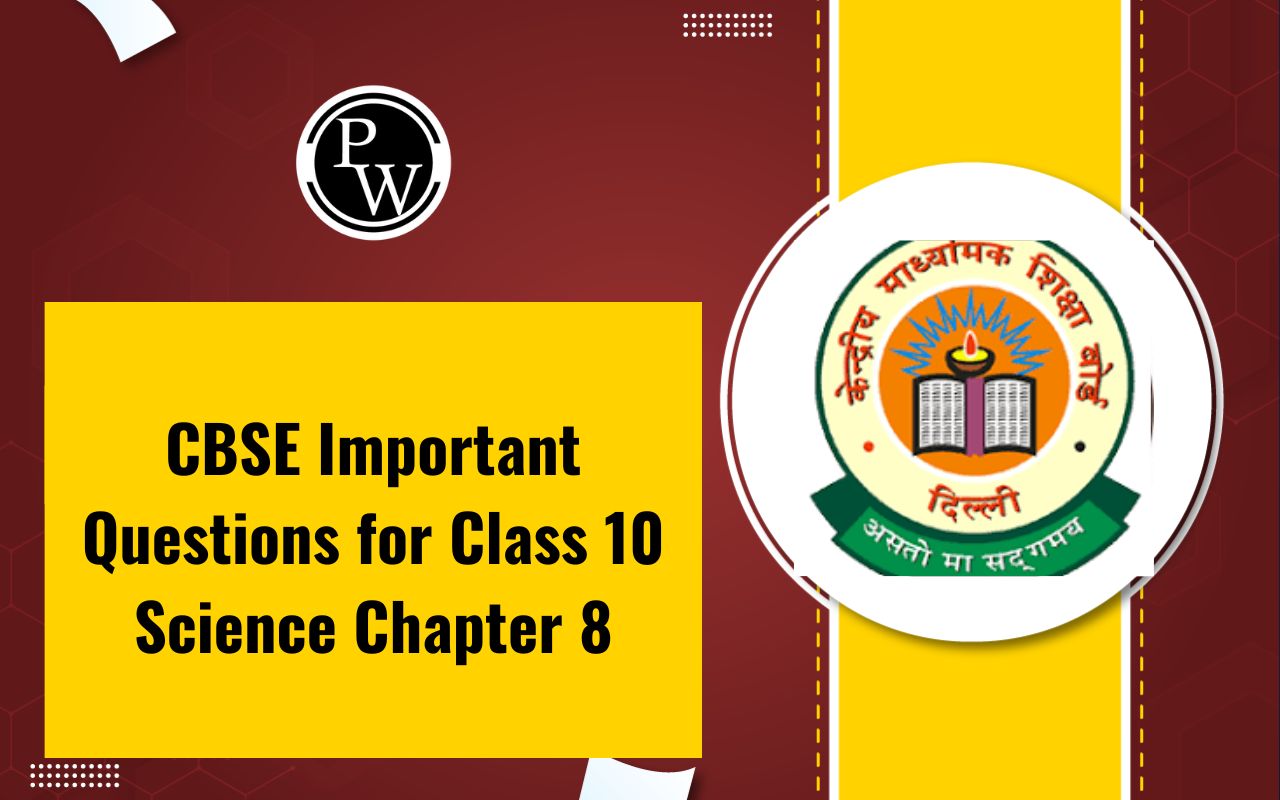
NCERT Solutions for Class 12 Maths Chapter 1 Excercise 1.1 (Relations and Functions)
NCERT Solutions for Class 12 Maths Chapter 1 Excercise 1.1 Relations and Functions is prepared by academic team of Physics Wallah. We have prepared NCERT Solutions for all exercise of chapter 1. Given below is step by step solutions of all questions given in NCERT textbook for Chapter 1 Relations and Functions.NCERT Solutions for Class 12 Maths Chapter 1 Exercise 1.1 Chapter 13 Overview
NCERT Solutions Class 12 Maths Chapter 1 covers these important topics. Students are advised to thoroughly review each topic in order to completely understand the ideas covered in the chapter and make good use of the offered solutions.These solutions are a result of the teachers at Physics Wallah working hard to improve students’ understanding of the concepts covered in the chapter. After going over and rehearsing these answers, the goal is for students to easily score high exam results.
NCERT Solutions for Class 12 Maths Chapter 1 PDF
To help students understand and practise chapter themes, our team of instructors at Physics Wallah has developed thorough solutions for NCERT Class 12 Maths, Chapter 1. The purpose of these questions is to make explanations easier to understand for Students. You can use the following link to download the NCERT Solutions for Class 12 Maths, Chapter 1 PDF:NCERT Solutions Class 12 Maths Chapter 1 PDF Download Link
NCERT Solutions for Class 12 Physics
NCERT Solutions for Class 12 Maths Chapter 1 Excercise 1.1
Solve The Following Questions NCERT Solutions for Class 12 Maths Chapter 1 Excercise 1.1 (Relations and Functions):
Question 1. Determine whether each of the following relations are reflexive, symmetric and transitive: (i)Relation R in the set A = {1, 2, 3…13, 14} defined as R = {(x, y): 3x − y = 0} (ii) Relation R in the set N of natural numbers defined as R = {(x, y): y = x + 5 and x < 4} (iii) Relation R in the set A = {1, 2, 3, 4, 5, 6} as R = {(x, y): y is divisible by x} (iv) Relation R in the set Z of all integers defined as R = {(x, y): x − y is as integer} (v) Relation R in the set A of human beings in a town at a particular time given by (a) R = {(x, y): x and y work at the same place} (b) R = {(x, y): x and y live in the same locality} (c) R = {(x, y): x is exactly 7 cm taller than y} (d) R = {(x, y): x is wife of y} (e) R = {(x, y): x is father of y}Solution : (i) A = {1, 2, 3 … 13, 14} R = {(x, y): 3x − y = 0} ∴R = {(1, 3), (2, 6), (3, 9), (4, 12)} R is not reflexive since (1, 1), (2, 2) … (14, 14) ∉ R. Also, R is not symmetric as (1, 3) ∈R, but (3, 1) ∉ R. [3(3) − 1 ≠ 0] Also, R is not transitive as (1, 3), (3, 9) ∈R, but (1, 9) ∉ R. [3(1) − 9 ≠ 0] Hence, R is neither reflexive, nor symmetric, nor transitive. (ii) R = {(x, y): y = x + 5 and x < 4} = {(1, 6), (2, 7), (3, 8)} It is seen that (1, 1) ∉ R. ∴R is not reflexive. (1, 6) ∈R But,(6, 1) ∉ R. ∴R is not symmetric. Now, since there is no pair in R such that (x, y) and (y, z) ∈R, then (x, z) cannot belong to R. ∴ R is not transitive. Hence, R is neither reflexive, nor symmetric, nor transitive. (iii) A = {1, 2, 3, 4, 5, 6} R = {(x, y): y is divisible by x} We know that any number (x) is divisible by itself. (x, x) ∈R ∴R is reflexive. Now, (2, 4) ∈R [as 4 is divisible by 2] But, (4, 2) ∉ R. [as 2 is not divisible by 4] ∴R is not symmetric. Let (x, y), (y, z) ∈ R. Then, y is divisible by x and z is divisible by y. ∴z is divisible by x. ⇒ (x, z) ∈R ∴R is transitive. Hence, R is reflexive and transitive but not symmetric. (iv) R = {(x, y): x − y is an integer} Now, for every x ∈ Z, (x, x) ∈R as x − x = 0 is an integer. ∴R is reflexive. Now, for every x, y ∈ Z if (x, y) ∈ R, then x − y is an integer. ⇒ −(x − y) is also an integer. ⇒ (y − x) is an integer. ∴ (y, x) ∈ R ∴R is symmetric. Now, Let (x, y) and (y, z) ∈R, where x, y, z ∈ Z. ⇒ (x − y) and (y − z) are integers. ⇒ x − z = (x − y) + (y − z) is an integer. ∴ (x, z) ∈R ∴R is transitive. Hence, R is reflexive, symmetric, and transitive. (v) (a) R = {(x, y): x and y work at the same place} (x, x) ∈ R ∴ R is reflexive. If (x, y) ∈ R, then x and y work at the same place. ⇒ y and x work at the same place. ⇒ (y, x) ∈ R. ∴R is symmetric. Now, let (x, y), (y, z) ∈ R ⇒ x and y work at the same place and y and z work at the same place. ⇒ x and z work at the same place. ⇒ (x, z) ∈R ∴ R is transitive. Hence, R is reflexive, symmetric, and transitive. (b) R = {(x, y): x and y live in the same locality} Clearly (x, x) ∈ R as x and x is the same human being. ∴ R is reflexive. If (x, y) ∈R, then x and y live in the same locality. ⇒ y and x live in the same locality. ⇒ (y, x) ∈ R ∴R is symmetric. Now, let (x, y) ∈ R and (y, z) ∈ R. ⇒ x and y live in the same locality and y and z live in the same locality. ⇒ x and z live in the same locality. ⇒ (x, z) ∈ R ∴ R is transitive. Hence, R is reflexive, symmetric, and transitive. (c) R = {(x, y): x is exactly 7 cm taller than y} Now, (x, x) ∉ R Since human being x cannot be taller than himself. ∴R is not reflexive. Now, let (x, y) ∈R. ⇒ x is exactly 7 cm taller than y. Then, y is not taller than x. ∴ (y, x) ∉R Indeed if x is exactly 7 cm taller than y, then y is exactly 7 cm shorter than x. ∴R is not symmetric. Now, Let (x, y), (y, z) ∈ R. ⇒ x is exactly 7 cm taller thany and y is exactly 7 cm taller than z. ⇒ x is exactly 14 cm taller than z . ∴(x, z) ∉R ∴ R is not transitive. Hence, R is neither reflexive, nor symmetric, nor transitive. (d) R = {(x, y): x is the wife of y} Now, (x, x) ∉ R Since x cannot be the wife of herself. ∴R is not reflexive. Now, let (x, y) ∈ R ⇒ x is the wife of y. Clearly y is not the wife of x. ∴(y, x) ∉ R Indeed if x is the wife of y, then y is the husband of x. ∴ R is not symmetric. Let (x, y), (y, z) ∈ R ⇒ x is the wife of y and y is the wife of z. This case is not possible. Also, this does not imply that x is the wife of z. ∴(x, z) ∉ R ∴R is not transitive. Hence, R is neither reflexive, nor symmetric, nor transitive. (e) R = {(x, y): x is the father of y} (x, x) ∉ R As x cannot be the father of himself. ∴R is not reflexive. Now, let (x, y) ∈R. ⇒ x is the father of y. ⇒ y cannot be the father of y. Indeed, y is the son or the daughter of y. ∴(y, x) ∉ R ∴ R is not symmetric. Now, let (x, y) ∈ R and (y, z) ∈ R. ⇒ x is the father of y and y is the father of z. ⇒ x is not the father of z. Indeed x is the grandfather of z. ∴ (x, z) ∉ R ∴R is not transitive. Hence, R is neither reflexive, nor symmetric, nor transitive.
NCERT Solutions for Class 12 Maths Chapter 1 Exercise 1.2
Question 2. Show that the relation R in the set R of real numbers, defined as R = {(a, b): a ≤ b 2 } is neither reflexive nor symmetric nor transitive. Solution : R = {(a, b): a ≤ b 2 } , Relation R is defined as the set of real numbers. It can be observed that ∴R is not reflexive. Now, (1, 4) ∈ R as 1 < 4 2 But, 4 is not less than 1 2 . ∴(4, 1) ∉ R ∴R is not symmetric. Now, (3, 2), (2, 1.5) ∈ R (as 3 < 2 2 = 4 and 2 < (1.5) 2 = 2.25) But, 3 > (1.5) 2 = 2.25 ∴(3, 1.5) ∉ R ∴ R is not transitive. Hence, R is neither reflexive, nor symmetric, nor transitive.
∴R is not reflexive. Now, (1, 4) ∈ R as 1 < 4 2 But, 4 is not less than 1 2 . ∴(4, 1) ∉ R ∴R is not symmetric. Now, (3, 2), (2, 1.5) ∈ R (as 3 < 2 2 = 4 and 2 < (1.5) 2 = 2.25) But, 3 > (1.5) 2 = 2.25 ∴(3, 1.5) ∉ R ∴ R is not transitive. Hence, R is neither reflexive, nor symmetric, nor transitive.
NCERT Solutions for Class 12 Maths Chapter 1 Exercise 1.3
Question 3. Check whether the relation R defined in the set {1, 2, 3, 4, 5, 6} as R = {(a, b): b = a + 1} is reflexive, symmetric or transitive. Solution : Let A = {1, 2, 3, 4, 5, 6}. A relation R is defined on set A as: R = {(a, b): b = a + 1} ∴R = {(1, 2), (2, 3), (3, 4), (4, 5), (5, 6)} We can find (a, a) ∉ R, where a ∈ A. For instance, (1, 1), (2, 2), (3, 3), (4, 4), (5, 5), (6, 6) ∉ R ∴R is not reflexive. It can be observed that (1, 2) ∈ R, but (2, 1) ∉ R. ∴R is not symmetric. Now, (1, 2), (2, 3) ∈ R But, (1, 3) ∉ R ∴R is not transitive Hence, R is neither reflexive, nor symmetric, nor transitive.NCERT Solutions for Class 12 Maths Chapter 1 Exercise 1.4
Question 4. Show that the relation R in R defined as R = {(a, b): a ≤ b}, is reflexive and transitive but not symmetric. Solution : R = {(a, b); a ≤ b} Clearly (a, a) ∈ R as a = a. ∴R is reflexive. Now, (2, 4) ∈ R (as 2 < 4) But, (4, 2) ∉ R as 4 is greater than 2. ∴ R is not symmetric. Now, let (a, b), (b, c) ∈ R. Then, a ≤ b and b ≤ c ⇒ a ≤ c ⇒ (a, c) ∈ R ∴R is transitive. Hence,R is reflexive and transitive but not symmetric.NCERT Solutions for Class 12 Maths Chapter 1 Miscellaneous Exercise
Question 5. Check whether the relation R in R defined as R = {(a, b): a ≤ b 3 } is reflexive, symmetric or transitive. Solution : Question 6. Show that the relation R in the set {1, 2, 3} given by R = {(1, 2), (2, 1)} is symmetric but neither reflexive nor transitive.
Question 6. Show that the relation R in the set {1, 2, 3} given by R = {(1, 2), (2, 1)} is symmetric but neither reflexive nor transitive. Solution : Let A = {1, 2, 3}. A relation R on A is defined as R = {(1, 2), (2, 1)}. It is seen that (1, 1), (2, 2), (3, 3) ∉R. ∴ R is not reflexive. Now, as (1, 2) ∈ R and (2, 1) ∈ R, then R is symmetric. Now, (1, 2) and (2, 1) ∈ R However, (1, 1) ∉ R ∴ R is not transitive. Hence, R is symmetric but neither reflexive nor transitive.
Question 7. Show that the relation R in the set A of all the books in a library of a college, given by R = {(x, y): x and y have same number of pages} is an equivalence relation. Solution : Set A is the set of all books in the library of a college. R = {x, y): x and y have the same number of pages} Now, R is reflexive since (x, x) ∈ R as x and x has the same number of pages. Let (x, y) ∈ R ⇒ x and y have the same number of pages. ⇒ y and x have the same number of pages. ⇒ (y, x) ∈ R ∴R is symmetric. Now, let (x, y) ∈R and (y, z) ∈ R. ⇒ x and y and have the same number of pages and y and z have the same number of pages. ⇒ x and z have the same number of pages. ⇒ (x, z) ∈ R ∴R is transitive. Hence, R is an equivalence relation.
Question 8. Show that the relation R in the set A = {1, 2, 3, 4, 5} given by R = {(a,b) : |a-b| is even} is an equivalence relation. Show that all the elements of {1, 3, 5} are related to each other and all the elements of {2, 4} are related to each other. But no element of {1, 3, 5} is related to any element of {2, 4}.
Solution : A = {1, 2, 3, 4, 5} and R = {(a,b) : |a-b| is even} , then R = {(1, 3), (1, 5), (3, 5), (2, 4)} It is clear that for any element a ∈ A , we have|a-a| = 0 (which is even). ∴R is reflexive. Let (a,b) ∈ R. => |a-b| is even ⇒ |-(a-b) | = |b-a| is also even ⇒(b,a) ∈ R ∴R is symmetric. Now, let (a,b) ) ∈ R and (b, c) ∈ R. => |a-b| is even and |b -c| is even => (a - b) is even and (b - c) is even => (a - c) = (a - b) + (b - c) is even [Sum of two even integer is even] => |a - c | is even ∴R is transitive. Hence, R is an equivalence relation. Now, all elements of the set {1, 3, 5} are related to each other as all the elements of this subset are odd. Thus, the modulus of the difference between any two elements will be even. Similarly, all elements of the set {2, 4} are related to each other as all the elements of this subset are even. Also, no element of the subset {1, 3, 5} can be related to any element of {2, 4} as all elements of {1, 3, 5} are odd and all elements of {2, 4} are even. Thus, the modulus of the difference between the two elements (from each of these two subsets) will not be even.
Question 9. Show that each of the relation R in the set A = {x ∈ Z: 0 ≤ x ≤ 12} ,given by: (i) R = { (a,b) : |a - b| is a multiple of 4} (ii) R = { (a,b) : a= b} is an equivalence relation. Find the set of all elements related to 1 in each case. Solution : (a) A ={x in Z : 0 <= <= 12} = {0,1,2,3,4,5,6,7,8,9,10,11,12} R = {(a,b):|a-b| is a multiple of 4} For any element a ∈ A, we have (a,a ) ∈ R as |a - a| = 0 is a multiple of 4. ∴R is reflexive. Now, let (a, b) ∈ R ⇒ |a- b| is a multiple of 4. => |-(a-b)|=|b -a| is a multiple of 4 ⇒ (b, a ) ∈ R ∴R is symmetric. Now, let (a,b), (b,c) ∈ R. => |a - b| is multiple of 4 and |b - c| is a multiple of 4 => (a-b) is a multiple of 4 and (b-c) is a multiple of 4 => (a-c) = (a - b) + (b - c) is a multiple of 4 => (a,c)∈ R. ∴ R is transitive. Hence, R is an equivalence relation. The set of elements related to 1 is {1, 5, 9} since |1 - 1| = 0 is a multiple of 4 |5 - 1| = 4 is a multiple of 4 |9 - 1| = 8 is a multiple of 4 (b) R = {(a,b): a = b} For any element a ∈ A, we have ( a,a ) ∈ R, since a = a. ∴R is reflexive. Now, let (a,b ) ∈ R and (b, c) ∈ R. ⇒ a = b and b = c ⇒ a = c ⇒ (a,c) ∈ R. ∴ R is transitive. Hence, R is an equivalence relation. The elements in R that are related to 1 will be those elements from set A which are equal to 1. Hence, the set of elements related to 1 is {1}.
Question 10. Given an example of a relation. Which is (i) Symmetric but neither reflexive nor transitive. (ii) Transitive but neither reflexive nor symmetric. (iii) Reflexive and symmetric but not transitive. (iv) Reflexive and transitive but not symmetric. (v) Symmetric and transitive but not reflexive. Solution : (i) Let A = {5, 6, 7}. Define a relation R on A as R = {(5, 6), (6, 5)}. Relation R is not reflexive as (5, 5), (6, 6), (7, 7) ∉ R. Now, as (5, 6) ∈ R and also (6, 5) ∈ R, R is symmetric. ⇒ (5, 6), (6, 5) ∈ R, but (5, 5) ∉ R ∴R is not transitive. Hence, relation R is symmetric but not reflexive or transitive. (ii)Consider a relation R in R defined as: R = {(a, b): a < b} For any a ∈ R, we have (a, a) ∉ R since a cannot be strictly less than a itself. In fact, a = a. ∴ R is not reflexive. Now, (1, 2) ∈ R (as 1 < 2) But, 2 is not less than 1. ∴ (2, 1) ∉ R ∴ R is not symmetric. Now, let (a, b), (b, c) ∈ R. ⇒ a < b and b < c ⇒ a < c ⇒ (a, c) ∈ R ∴R is transitive. Hence, relation R is transitive but not reflexive and symmetric. (iii)Let A = {4, 6, 8}. Define a relation R on A as: A = {(4, 4), (6, 6), (8, 8), (4, 6), (6, 4), (6, 8), (8, 6)} Relation R is reflexive since for every a ∈ A, (a, a) ∈R i.e., (4, 4), (6, 6), (8, 8)} ∈ R. Relation R is symmetric since (a, b) ∈ R ⇒ (b, a) ∈ R for all a, b ∈ R. Relation R is not transitive since (4, 6), (6, 8) ∈ R, but (4, 8) ∉ R. Hence, relation R is reflexive and symmetric but not transitive. (iv) Define a relation R in R as: R = {a, b): a 3 ≥ b 3 } Clearly (a, a) ∈ R as a 3 = a 3 . ∴R is reflexive. Now, (2, 1) ∈ R (as 2 3 ≥ 1 3 ) But, (1, 2) ∉ R (as 1 3 < 2 3 ) ∴ R is not symmetric. Now, Let (a, b), (b, c) ∈ R. ⇒ a 3 ≥ b 3 and b 3 ≥ c 3 ⇒ a 3 ≥ c 3 ⇒ (a, c) ∈ R ∴R is transitive. Hence, relation R is reflexive and transitive but not symmetric. (v) Let A = {−5, −6}. Define a relation R on A as: R = {(−5, −6), (−6, −5), (−5, −5)} Relation R is not reflexive as (−6, −6) ∉ R. Relation R is symmetric as (−5, −6) ∈ R and (−6, −5}∈R. It is seen that (−5, −6), (−6, −5) ∈ R. Also, (−5, −5) ∈ R. ∴The relation R is transitive. Hence, relation R is symmetric and transitive but not reflexive.
Question 11. Show that the relation R in the set A of points in a plane given by R = {(P, Q): distance of the point P from the origin is same as the distance of the point Q from the origin}, is an equivalence relation. Further, show that the set of all point related to a point P ≠ (0, 0) is the circle passing through P with origin as centre. Solution : R = {(P, Q): distance of point P from the origin is the same as the distance of point Q from the origin} Clearly, (P, P) ∈ R since the distance of point P from the origin is always the same as the distance of the same point P from the origin. ∴R is reflexive. Now, Let (P, Q) ∈ R. ⇒ The distance of point P from the origin is the same as the distance of point Q from the origin. ⇒ The distance of point Q from the origin is the same as the distance of point P from the origin. ⇒ (Q, P) ∈ R ∴R is symmetric. Now, Let (P, Q), (Q, S) ∈ R. ⇒ The distance of points P and Q from the origin is the same and also, the distance of points Q and S from the origin is the same. ⇒ The distance of points P and S from the origin is the same. ⇒ (P, S) ∈ R ∴R is transitive. Therefore, R is an equivalence relation. The set of all points related to P ≠ (0, 0) will be those points whose distance from the origin is the same as the distance of point P from the origin. In other words, if O (0, 0) is the origin and OP = k, then the set of all points related to P is at a distance of k from the origin. Hence, this set of points forms a circle with the centre as the origin and this circle passes through point P.
Question 12. Show that the relation R defined in the set A of all triangles as R = {(T 1 , T 2 ): T 1 is similar to T 2 }, is equivalence relation. Consider three right angle triangles T 1 with sides 3, 4, 5, T 2 with sides 5, 12, 13 and T 3 with sides 6, 8, 10. Which triangles among T 1 , T 2 and T 3 are related? Solution : R = {(T 1 , T 2) : T 1 is similar to T 2 } R is reflexive since every triangle is similar to itself. Further, if (T 1 , T 2 ) ∈ R, then T 1 is similar to T 2 . ⇒ T 2 is similar to T 1 . ⇒ (T 2 , T 1 ) ∈R ∴R is symmetric. Now, Let (T 1 , T 2 ), (T 2 , T 3 ) ∈ R. ⇒ T 1 is similar to T 2 and T 2 is similar to T 3 . ⇒ T 1 is similar to T 3 . ⇒ (T 1 , T 3 ) ∈ R ∴ R is transitive. Thus, R is an equivalence relation. Now, we can observe that: Therefore, 3/6 = 4/8 = (5/10 = 1/2) ∴The corresponding sides of triangles T 1 and T 3 are in the same ratio. Then, triangle T 1 is similar to triangle T 3 . Hence, T 1 is related to T 3 .
Question 13. Show that the relation R defined in the set A of all polygons as R = {(P 1 , P 2 ): P 1 and P 2 have same number of sides}, is an equivalence relation. What is the set of all elements in A related to the right angle triangle T with sides 3, 4 and 5? Solution : R = {(P 1 , P 2 ): P 1 and P 2 have same the number of sides} R is reflexive since (P 1 , P 1 ) ∈ R as the same polygon has the same number of sides with itself. Let (P 1 , P 2 ) ∈ R. ⇒ P 1 and P 2 have the same number of sides. ⇒ P 2 and P 1 have the same number of sides. ⇒ (P 2 , P 1 ) ∈ R ∴R is symmetric. Now, Let (P 1 , P 2 ), (P 2 , P 3 ) ∈ R. ⇒ P 1 and P 2 have the same number of sides. Also, P 2 and P 3 have the same number of sides. ⇒ P 1 and P 3 have the same number of sides. ⇒ (P 1 , P 3 ) ∈ R ∴R is transitive. Hence, R is an equivalence relation. The elements in A related to the right-angled triangle (T) with sides 3, 4, and 5 are those polygons which have 3 sides (since T is a polygon with 3 sides). Hence, the set of all elements in A related to triangle T is the set of all triangles.
Question 14. Let L be the set of all lines in XY plane and R be the relation in L defined as R = {(L 1 , L 2 ): L 1 is parallel to L 2 }. Show that R is an equivalence relation. Find the set of all lines related to the line y = 2x + 4.
Solution : R = {(L 1 , L 2 ): L 1 is parallel to L 2 } R is reflexive as any line L 1 is parallel to itself i.e., (L 1 , L 1 ) ∈ R. Now, Let (L 1 , L 2 ) ∈ R. ⇒ L 1 is parallel to L 2 . ⇒ L 2 is parallel to L 1 . ⇒ (L 2 , L 1 ) ∈ R ∴ R is symmetric. Now, Let (L 1 , L 2 ), (L 2 , L 3 ) ∈R. ⇒ L 1 is parallel to L 2 . Also, L 2 is parallel to L 3 . ⇒ L 1 is parallel to L 3 . ∴R is transitive. Hence, R is an equivalence relation. The set of all lines related to the line y = 2x + 4 is the set of all lines that are parallel to the line y = 2x + 4. Slope of line y = 2x + 4 is m = 2 It is known that parallel lines have the same slopes. The line parallel to the given line is of the form y = 2x + c, where c ∈R. Hence, the set of all lines related to the given line is given by y = 2x + c, where c ∈ R.
Question 15. Let R be the relation in the set {1, 2, 3, 4} given by R = {(1, 2), (2, 2), (1, 1), (4, 4), (1, 3), (3, 3), (3, 2)}. Choose the correct answer. (A) R is reflexive and symmetric but not transitive. (B) R is reflexive and transitive but not symmetric. (C) R is symmetric and transitive but not reflexive. (D) R is an equivalence relation. Solution : R = {(1, 2), (2, 2), (1, 1), (4, 4), (1, 3), (3, 3), (3, 2)} It is seen that (a, a) ∈ R, for every a ∈{1, 2, 3, 4}. ∴ R is reflexive. It is seen that (1, 2) ∈ R, but (2, 1) ∉ R. ∴R is not symmetric. Also, it is observed that (a, b), (b, c) ∈ R ⇒ (a, c) ∈ R for all a, b, c ∈ {1, 2, 3, 4}. ∴ R is transitive. Hence, R is reflexive and transitive but not symmetric. The correct answer is B.
Question 16. Let R be the relation in the set N given by R = {(a, b): a = b − 2, b > 6}. Choose the correct answer. (A) (2, 4) ∈ R (B) (3, 8) ∈R (C) (6, 8) ∈R (D) (8, 7) ∈ R
Solution : R = {(a, b): a = b − 2, b > 6} Now, since b > 6, (2, 4) ∉ R Also, as 3 ≠ 8 − 2, (3, 8) ∉ R And, as 8 ≠ 7 − 2 (8, 7) ∉ R Now, consider (6, 8). We have 8 > 6 and also, 6 = 8 − 2. ∴(6, 8) ∈ R The correct answer is C.
What is Exercise 1.1 in Class 12 Maths Chapter 1 about?
Exercise 1.1 in Class 12 Maths Chapter 1 on Relations and Functions typically involves introductory problems related to understanding relations and functions. It may cover concepts like Cartesian products, ordered pairs, and basic definitions.
How many questions are there in Exercise 1.1 of Class 12 Maths Chapter 1?
The number of questions in Exercise 1.1 may vary depending on the specific textbook or curriculum. It includes several questions to reinforce the fundamental concepts introduced in the chapter.
What topics are covered in Exercise 1.1 of Class 12 Maths Chapter 1?
Exercise 1.1 often covers the basics of relations and functions, including understanding sets, ordered pairs, Cartesian products, and the definition of relations.
Are the questions in Exercise 1.1 difficult?
The difficulty level of the questions can vary from student to student. Exercise 1.1 is usually designed to provide a foundation for more complex topics in the later exercises. It's recommended to understand the basic concepts thoroughly.
How can I approach solving Exercise 1.1 questions?
Begin by reviewing the concepts introduced in the chapter. Read each question carefully, and apply the relevant definitions and principles. Practice drawing diagrams or examples to enhance your understanding.
🔥 Trending Blogs
Talk to a counsellorHave doubts? Our support team will be happy to assist you!

Free Learning Resources
PW Books
Notes (Class 10-12)
PW Study Materials
Notes (Class 6-9)
Ncert Solutions
Govt Exams
Class 6th to 12th Online Courses
Govt Job Exams Courses
UPSC Coaching
Defence Exam Coaching
Gate Exam Coaching
Other Exams
Know about Physics Wallah
Physics Wallah is an Indian edtech platform that provides accessible & comprehensive learning experiences to students from Class 6th to postgraduate level. We also provide extensive NCERT solutions, sample paper, NEET, JEE Mains, BITSAT previous year papers & more such resources to students. Physics Wallah also caters to over 3.5 million registered students and over 78 lakh+ Youtube subscribers with 4.8 rating on its app.
We Stand Out because
We provide students with intensive courses with India’s qualified & experienced faculties & mentors. PW strives to make the learning experience comprehensive and accessible for students of all sections of society. We believe in empowering every single student who couldn't dream of a good career in engineering and medical field earlier.
Our Key Focus Areas
Physics Wallah's main focus is to make the learning experience as economical as possible for all students. With our affordable courses like Lakshya, Udaan and Arjuna and many others, we have been able to provide a platform for lakhs of aspirants. From providing Chemistry, Maths, Physics formula to giving e-books of eminent authors like RD Sharma, RS Aggarwal and Lakhmir Singh, PW focuses on every single student's need for preparation.
What Makes Us Different
Physics Wallah strives to develop a comprehensive pedagogical structure for students, where they get a state-of-the-art learning experience with study material and resources. Apart from catering students preparing for JEE Mains and NEET, PW also provides study material for each state board like Uttar Pradesh, Bihar, and others
Copyright © 2025 Physicswallah Limited All rights reserved.
Get App









